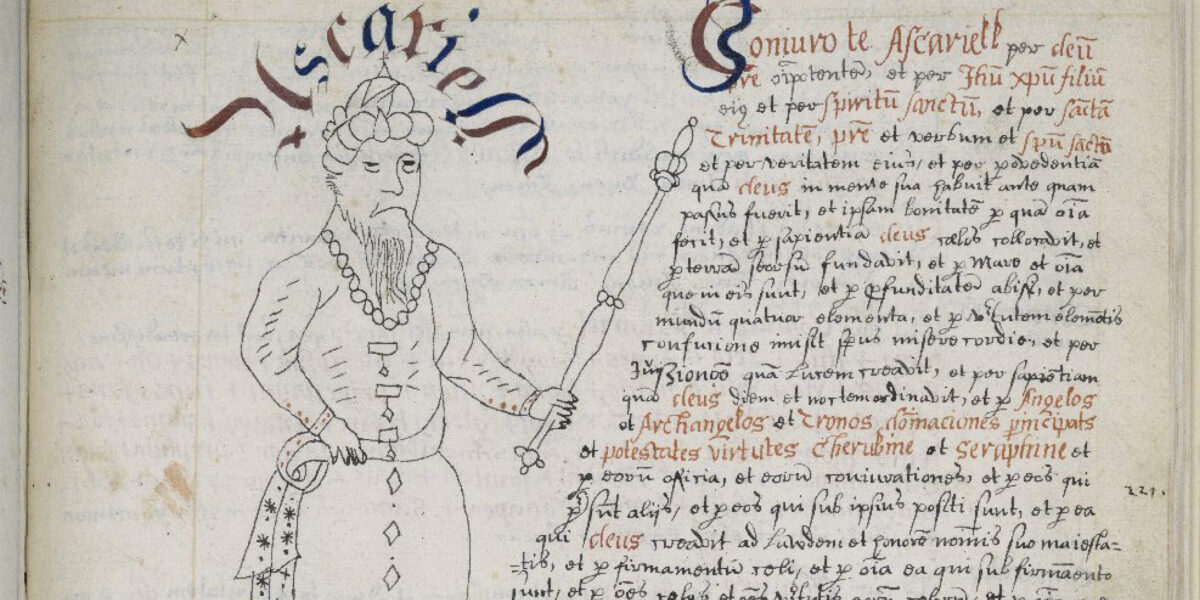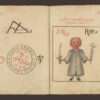Rightfully considered the main source of English magic, 16th Century
Folger Vb26
Folger Shakespeare Library MS Vb26 is rightfully considered the main source of English magic. Most of the Vb26 pages are from 16th century manuscripts. The first 14 pages are missing. During the first centuries of their existence, they were divided into two parts, which were connected by Folger. Why they were separated is unknown.
The first part is 205 pages of Vb26 (1), with the first 14 pages missing. On the 15th page is the owner’s note: RCS, 1822. The astrologer RC Smith, known as Raphael, received this manuscript in 1822. And it turns out that he got the manuscript already without the first pages.
Frederick Hockley was the owner of at least the first and largest portion of the manuscript that he used in writing The Book of Powers of Spirits. The second additional part Vb26 (2) is 29 pages of text, but it is not known for certain whether it was in Hockley’s possession. However, his work Occult Spells bears clear indications that he was familiar with the text.
The manuscript is attributed to a certain John Palmer, whose name is annotated on page 135. The name John Weston appears on page 143, but it is written later.
Description of the manuscript in the Folger library:
“An eclectic anthology of enchantments and invocations with diagrams, magic circles, descriptions and images of spirits, angels and a demon. Drawn from the Solomon tradition, with Lemegeton (including Goetia), references to The Monk Bacon” (Roger Bacon) and collection within the Christian structure. Multiple enchantments for identifying and catching thieves, healing and preventing disease. Includes translations of Psalms 43, 47, 51, 54, 67, 121, 138 and 150 (pp. 25-26). “
The final group of spirits in this manuscript, including the Fairy King Oberion, appears in a number of other English texts from the 15th century (where they are described as demons). But Oberion, as a character in literature, can be traced back to at least the 13th century (see Shakespeare’s A Midsummer Night’s Dream, Ben Johnson’s Oberion, The Fay Prince).
David Rankin, in The Book of Treasure Spirits, writes: “The incantations of the goetic spirits, ancient gods, demons and fairies are a rich legacy of magical treasure hunt. Here is published for the first time (from the long-ignored 17th century British Library Sloane MS 3824) a spell that was carried out at the direction of King Edward IV with other rituals for finding treasures, obtaining treasures from the depths of the sea, as well as forcing the thief to return what was stolen. ” The Book of Treasures of Spirits on pages 109-110 refers to the Fairy King and Queen and their seven sisters.
The grimoire of Arthur Gauntlet also contains the spell of Oberion, the source of which is manuscript Vb26. Another work that describes the spell of Oberion is Liber Lunae (Sloane MS 3826)
Manuscript © Folger Shakespeare Library




